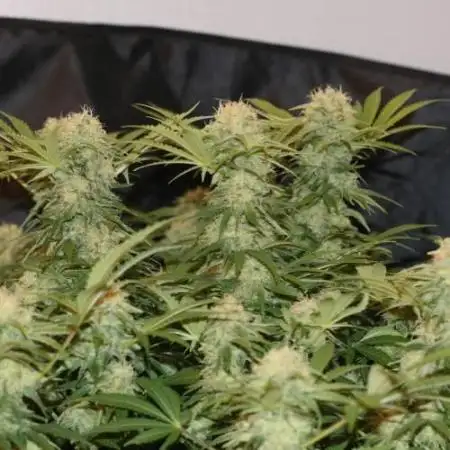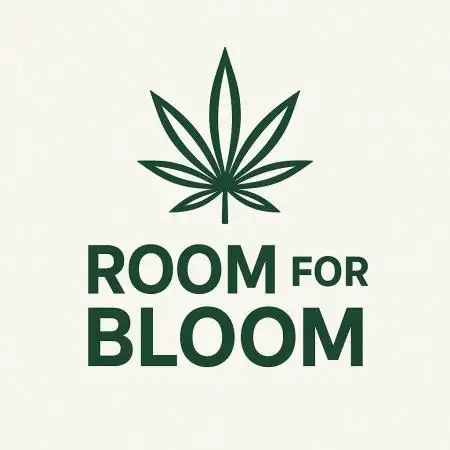By continuing to use the website or clicking Accept you consent to our cookies and personal data policy and confirm that you are at least 18 year old. For details please see Privacy Policy and Terms
Accept
Led light upgrade
Chameleonstarted grow question 1mo ago
Chameleon
I'm looking to upgrade my lighting from a 600w hps to led. I've got a 1.2m x 1.2 x 2m tent, it doesn't need to cover the whole area but as near as possible, any guidance appreciated
Solved
likes
00110001001001111Oanswered grow question 1mo ago
This is all for 12 hour operation. If you exclusively grow autoflowers on an 18/6 schedule, you can adjust proportionally... e.g. you need 2/3rds of the PPFD listed to reach upper thirties DLI.
1.2 x 1.2 = 1.44 m^2
You can use this to determine how much umol/s PAR production you need from a light or array of lights. After that it's assessing efficacy and heat dissapation to determine overall quality of a grow light.
To hit ~37ish DLI, you need about 860 PPFD. These may be exact numbers for the example,but you should read it as upper-30s and a rough estimate to get there. My suggestions are based on light produced at the diode and consider normal hanging distances. The actual value at the canopy is probably a bit short of this calculation for a reason... i'm accounting for lost photons - absorbed by walls or lost to radiance.
860 * 1.44 = 1240 umol/s PAR will be sufficient light production for your 1.2 x 1.2 area. A little more or a little less isn't world-ending, either. A little more allows you to mitigate the dimming over time that will happen... by 50k hours with the 'best' lights you'll be at 90% of original intensity (90% of original umol/s PAR production).
Heat dissipation is easy to assess.. does the heat sink look flimsy?
Efficacy is a bit more difficult. As with umol/s, specification sheets for grow lights are often a bunch of lies or bad math to paint a false picture. You have to compare the light manufacturer's specifications with the bulk of the diodes used -- samsung or bridgelux or osram etc... go to their websites and look how the diodes were tested. if the diodes are not run at the same wattage/amps etc, then it will not last as long nor meet advertised efficacy. Also, you see some list an efficacy higher than what is possible, lol. Nonstop lies... the original diode maker spec sheets has integriry, but the light maker's spec sheets often do not.
Basic math can take you a long way.. divide watts by diode count and compare to testing specs. the further off they are, the worse it is and it gets worse at a faster pace the further it is off (an increasing degredation curve, not a straight line).
light distirbution -- just about anything will be better than your hps bulb in this respect. Bars / strips of diodes is better than quantum boards, but if the price and specs are right, there are comparisons that could favor a QB in some contexts.
deepsheebaanswered grow question 24d ago
Migro light , sanlight, check on their website.. to me those are the only reliable lights. HLG too but way to expensive. Lumatek should have something too. Migro aray 500 is a good call. Some they sell it as second hand. Sanlight is the plus ultra but very expensive.
likes
Complain
RoomForBloomanswered grow question 1mo ago
I use SANlight LEDs.
They might be on the more expensive side but they are really worth their money and they are beeing used by many professional companys.
Austrian made and really good quality and customer service especially if you are located in Europe and the EU.
If you dont mind some weaker PPFD-spots go with one "SANlight EVO 6 - 120" = 400w.
If you want better overall coverage go with 2 x "SANlight EVO 4 - 120 (265w)" = 530w.
1 like
Complain
MadProfessoranswered grow question 1mo ago
I do have the same tent size and i am using two of this led lamps FC 4000-EVO. Bit I do turn them doen to 60% of their power and it is perfectly well used lightning in that tent
likes
Complain
00110001001001111Oanswered grow question 1mo ago
watts are a poor way to look at this.. stick to umol/s PAR production. lights that require more watts to give you 1240umol/s just produce more heat and waste more electricity.
likes
Complain
m0useanswered grow question 1mo ago
I use the brand Medic Grow and like em. Simple and works.
footnote, I was given these lights and did not pay for them. Out of the other lights I have used they performed just as good. if not a tiny bit better as they are much stronger. I had 300W before in a 2x4 on low efficiency lights then upgraded to 480W "overkill" medicgrow. I would agree getting more watts and just diming down like others suggested. future proofing yourself, and LED's last longer with they don't have as much hydro being pushed though them.
1 like
Complain
Ultravioletanswered grow question 1mo ago
Roughly 4ftx4ft tent, preferably get led equivalent of 4-600watts. Personally I'd get a light that's more rated for a 5x5 flowering space just to ensure my edges get a solid ppfd and there is not too much drop off at the corners of the canopy compared to the centre. Dimmer is always very helpful also. It all depends what your really looking for from your grow and how hard you want to push growth. 400w led is more than enough. 600w if your feeling big or go home.
Gluck.
1 like
Complain








